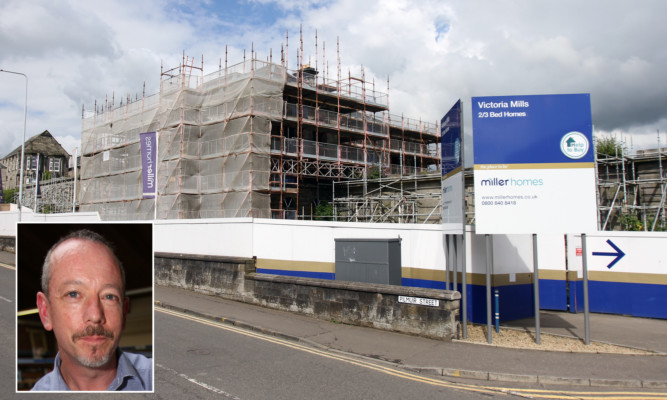Publicising the terrible plight of some of Fife’s most beautiful buildings could be vital in finding people to save them.
That is the view of Fife Council built heritage planner Matthew Price.
He is now working with the Royal Commission on the Ancient and Historical Monuments of Scotland to maintain the national Buildings at Risk Register entries for Fife.
Entries range from the former Station Hotel and Viewforth High School annexe in Kirkcaldy to the Old St Columba’s School in Cupar and former Victoria Works in Dunfermline.
Mr Price said: “We have not far off the greatest number of listed buildings and conservation areas of any in Scotland.
“These buildings are nationally recognised as being of special historic or architectural importance and are appreciated by local communities, businesses and visitors alike.
“Unfortunately, for a variety of reasons, many of these buildings in Fife, as elsewhere in Scotland, are neglected and as a result, at risk.
“We work closely with the commission in maintaining the national Buildings at Risk Register entries for Fife.
“The register advertises the plight of these buildings and in many cases, results in finding a suitable restorer purchaser to save them.”
Mr Price said one of the biggest problems is finding new uses for buildings which were designed for very specific purposes but are now obsolete.
He said their very interest is as increasingly rare examples of the past activities which helped shape who we are often industrial or agricultural.
However, to adapt them can result in destroying their essential character and identity.
Mr Price added: “So often, particularly with vernacular buildings, it is the detailing, the traditional materials and design, including such things as the size and arrangement of windows and doors, which communicate this to us today.”
Mr Price said if the use proposed is very different then the changes required to make it fit for a new use can easily destroy what was special.
He added: “The challenge is to find ways to achieve a new life for these buildings in a manner which protects our historic built heritage.
“Fortunately, through the planning process and the protection provided though statutory listing, we can help owners or prospective developers do this in a way which protects and even enhances this special historic or architectural interest for future generations.”
Fife Council is also proposing removing conditions that developers have to make cash contributions from some renovations and conversions to listed buildings, in a bid to make these proposals more viable.
Mr Price continued: “We have also been highly successful in recent years in winning match funding from Historic Scotland and the Heritage Lottery Fund to run a number of conservation area regeneration schemes.
“Past schemes include Dunfermline, Kirkcaldy and Dysart conservation areas. Details of current and prospective schemes can be found on Fife Direct.
“This has helped to restore many important buildings otherwise at risk and offered repair grants to owners in these areas.”
